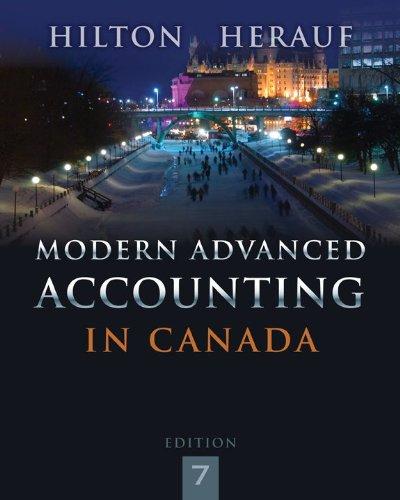On January 1, Year 1, P Company (a Canadian company) purchased 90% of S Company (located in
Question:
The following exchange rates were in effect during Year 1:
Jan. 1 ................ FC1 = $1.10
Average for year ........ FC1 = $1.16
When ending inventory purchased ... FC1 = $1.19
Dec. 31 .............. FC1 = $1.22
The statement of financial position of S Company on January 1, Year 1, is as follows:
S Company (FC)
Plant and equipment (net) ...... 20,000
Inventory ........... 8,000
Monetary assets (current) ..... 10,000
38,000
Ordinary shares ......... 10,000
Retained earnings ........ 3,000
Bonds payable (mature in eight years). 16,000
Current liabilities ......... 9,000
38,000
The December 31, Year 1, financial statements of P Company (in $) and S Company (in FC) are shown below:
.png)
Dividends were declared on December 31, Year 1, in the amount of $22,000 by P Company and FC 4,000 by S Company.
Required:
(a) Prepare the December 31, Year 1, consolidated financial statements, assuming that S Company€™s functional currency is each of the following:
(i) The Canadian dollar
(ii) The foreign currency unit
(b) Now assume that P Company is a private company. It uses ASPE and has c hosen to use the equity method to report its investment in S Company. Calculate the balance in the investment account at December 31, Year 1, assuming that S Company€™s functional currency is the Canadian dollar.
Goodwill is an important concept and terminology in accounting which means good reputation. The word goodwill is used at various places in accounting but it is recognized only at the time of a business combination. There are generally two types of... Ending Inventory
The ending inventory is the amount of inventory that a business is required to present on its balance sheet. It can be calculated using the ending inventory formula Ending Inventory Formula =... Financial Statements
Financial statements are the standardized formats to present the financial information related to a business or an organization for its users. Financial statements contain the historical information as well as current period’s financial...
Fantastic news! We've Found the answer you've been seeking!
Step by Step Answer:
Related Book For 

Modern Advanced Accounting In Canada
ISBN: 9781259066481
7th Edition
Authors: Hilton Murray, Herauf Darrell
Question Posted:





